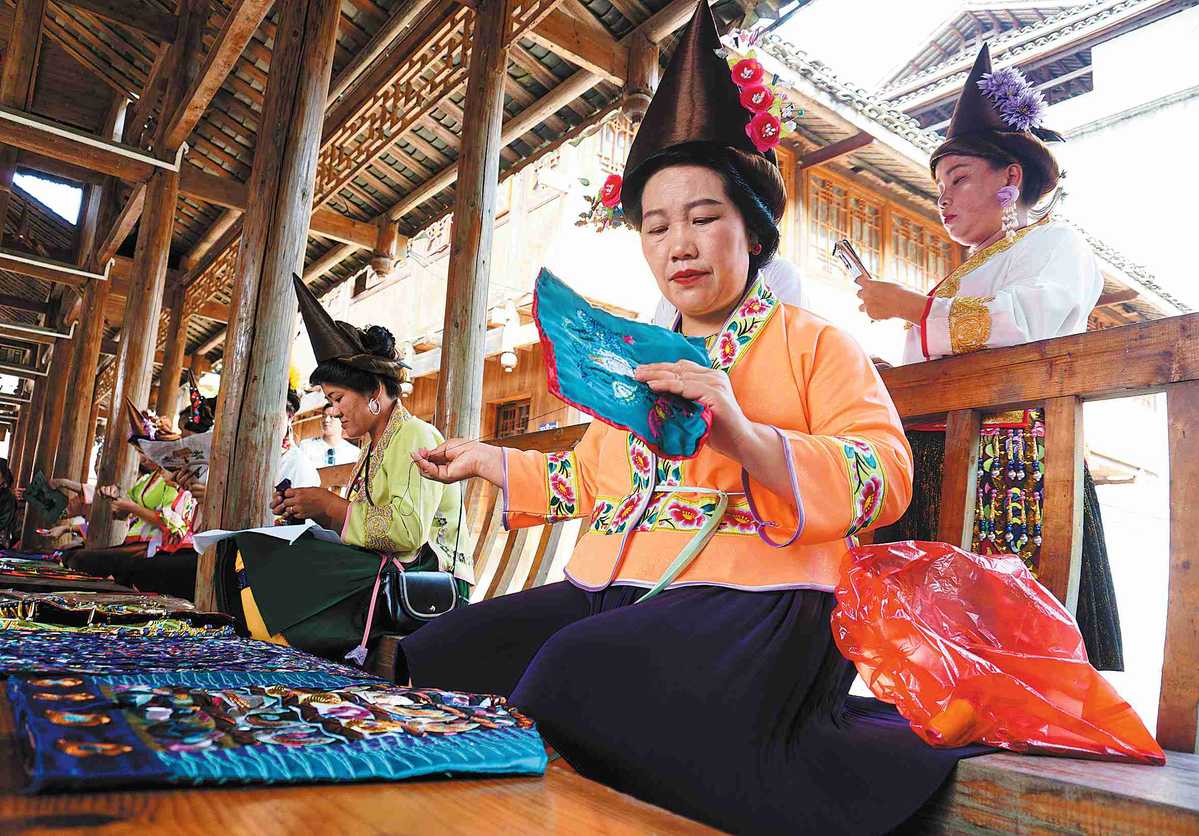Flourishing handicrafts sector kicks off rural revamp


GUIYANG — China has stepped up efforts to develop the traditional handicrafts of ethnic minorities, a move that has not only increased incomes and improved the lives of the local population, but also injected momentum into the country's rural revitalization.
Wei Zuying, a 43-year-old woman from the Miao ethnic group, learned Miao embroidery, a traditional folk craft, from her grandmother and mother at an early age, just like many other Miao women.
Wei, who hails from Ma'an village in Congjiang county of Southwest China's Guizhou province, dropped out after graduating from primary school because of poverty and migrated to cities for work later on. But with only a primary school education, she felt it difficult to find high-paying jobs.
In 2008, she decided to return to her hometown and set up an embroidery workshop to make clothes with Miao embroidery.
The overwhelming response to her handmade embroidered clothing left her pleasantly surprised.
To meet the growing demand and expand production, Wei and her elder sister invested in a computerized embroidery machine in 2011.
Wei's business has since grown — she currently owns an embroidery company that produces a diverse range of products with ethnic characteristics such as embroidered costumes and shoes, silver jewelry and other clothing. The venture generates annual revenue of over 10 million yuan ($1.42 million) and has provided job opportunities for nearly 1,000 people.
Like Wei, an increasing number of Miao women in Congjiang are engaged in the embroidery industry, thanks to the local government's supportive policies, such as launching Miao embroidery training courses.
"The local authorities have provided training to women using my company's resources to help them secure jobs in the embroidery industry and improve their incomes," said Wei. "Miao women are known for their handicrafts and diligence. We've woven a better life with a small embroidery needle."
The Qing Miao people are a fascinating ancient subgroup of the Miao ethnic group, known for their distinctive ethnic costume-making techniques. This unique traditional handicraft is practiced in the Suojia Miao, Yi and Hui townships of Guizhou.
In the past few years, the local government has distributed spinning wheels and looms to villagers for free to encourage them to learn and preserve the traditional handicraft, said Wang Xinghong, Party chief of Gaoxing village in Suojia.
Wang's wife is an inheritor of the national intangible cultural heritage and his family has set up a factory to process the ethnic costume, which is very popular. Wang's success has inspired many villagers to open processing workshops for Qing Miao costumes.
"In recent years, there has been a boom in rural cultural tourism, with an increasing number of visitors coming to appreciate the unique Qing Miao culture and purchase the exquisite ethnic costumes. Local villagers have been able to increase their income by establishing workshops and factories dedicated to producing these traditional costumes," Wang said.
The Qing Miao costume processing industry is a shining example of the flourishing traditional handicraft sector in Guizhou. In 2013, the province launched a campaign to encourage local women to engage in traditional handicraft industries such as embroidery, batik and ethnic costume making.
In the past decade, the campaign has helped Guizhou build more than 1,000 poverty-alleviation bases, nurture more than 1,300 handicraft enterprises and cooperatives, and create jobs for over 500,000 people, generating an output value of more than 6 billion yuan in the past three years.
"The market potential of ethnic minority handicrafts is huge," said Ma Yongbin, who works with the Guizhou Academy of Social Sciences. "The development of the traditional handicraft industries blazes a path of prosperity and is playing an important role in boosting rural revitalization."
Xinhua




































